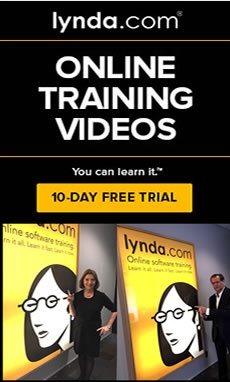Do you know how effective your content marketing efforts are?
Tell me if this sounds familiar.
Your marketing team has finally committed to expanding its online presence. Sure, perhaps they’re putting a little too much emphasis on push ads such as pop-ups and banners, but they’ve also embraced content marketing as a viable strategy. Better yet, they’ve tapped you as a content producer, and you couldn’t be happier with this new responsibility.
Quickly, you dive in and start producing. And while your first few pieces of content didn’t really seem to move the needle too much, no one really worried. After all, you were just learning the ropes. No big deal, right?
But now you’ve learned a few things, and you’re pretty sure you’ve cracked the magical content marketing formula. This next campaign will be different, you say. So, you get to it, working away on your pièce de résistance, confident that this will be the work that makes your brand a mover and shaker in the digital bazaar. Finally, after crossing that last T and dotting that last I, you hit publish.
And then…nothing.
So what happened?
We feel your pain. Everyone has made content that fizzled for one reason or another. But know this: You’re not alone. A staggering amount of brands don’t even know if their content has succeeded or failed! Here are some of the challenges content marketing is facing today:
- No strategy: Only 32 percent of content marketers in 2016 reported actually having a strategy, according to the B2B Content Marketing Report.
- No integration: CMOs reported low integration for their social marketing efforts—a dismal 4.2 out of 7, according to the CMO Study.
- No measurement, and no faith: These same two studies found similar worrisome news: The B2B Report found that only 30 percent of respondents found their content marketing effective, while the CMO Study found that a majority of CMOs either had been unable to determine the impact of their social marketing efforts or only able to generate qualitative data.
It doesn’t have to be like this. Social or not, content marketing or not, no program is likely to succeed without a strategy, integration, or a plan for measurement.
Yep, it turns out there’s more to content marketing than just producing and publishing. And while the best content programs involve engaged, collaborative teams, we understand that not every content producer has that luxury. So whether you’re part of an integrated team or an island unto yourself, here are some tips to get you moving in the right direction.
Define your goals.
Content marketing isn’t just about generating sales. Content marketing isn’t just about generating clicks either. Sure, these can be considered to important points on a spectrum, but your brand stands to gain in a variety of other ways through good content.
First, keep in mind that your goals should reflect the current state of your program. New to content marketing? Set engagement goals—followers, shares, comments, etc.—rather than sales goals. A little more seasoned? Try experimenting with leveraging your community to advocate on your behalf and amplify your brand’s message. After all, peer recommendations are the most trusted form of advertising in the digital bazaar.
Advocate. Advocate. Advocate.
Producing good content is only part of the puzzle. Now you have to advocate. Share your content far and wide, through whichever channels appear relevant, and with whomever is asking a question that you think you can help answer.
But here’s the thing: You don’t have to go it alone. No matter your industry, you have peers, coworkers, and other stakeholders who want to engage is the same conversations as you. Your voices are stronger together, but first it’s important that you can connect and share with each other. Social sharing platforms like LinkedIn Elevate are designed precisely with this in mind. Naturally, we can’t spend all of our time looking for interesting content to share. But if the interesting content comes to us, now we’re talking!
Social sharing platforms like LinkedIn Elevate are designed precisely with this in mind. Naturally, we can’t spend all of our time looking for interesting content to share. But if the interesting content comes to us, now we’re talking!
Through Elevate, social employees have access to a curated news stream full of content relevant to their industry. Employees can then choose the content that grabs their attention the most and share them across channels. So, just as your own voice is amplified through social sharing, so are the voices of others.
And remember, in case you need more incentive, sharing others’ content helps your own personal brand and makes it more likely that others with engage with your own content. Sharing content is about being credible—and credible people value others’ work as well as their own.
Measure. Adjust. Repeat.
![]() In a recent post, LinkedIn’s Katie Levinson (@kplevins) shared some tips on how to measure the success of your social advocacy program. To set up a framework for discussion, she divided measurement into three categories: Content engagement, employee activation, and business outcomes. Naturally, they all go hand-in-hand, but it’s helpful to separate them out and make sure they each get equal focus.
In a recent post, LinkedIn’s Katie Levinson (@kplevins) shared some tips on how to measure the success of your social advocacy program. To set up a framework for discussion, she divided measurement into three categories: Content engagement, employee activation, and business outcomes. Naturally, they all go hand-in-hand, but it’s helpful to separate them out and make sure they each get equal focus.
That said, one of Katie’s comments on employee activation especially struck me:
It’s vital to know exactly who is sharing and how much to avoid a slow-down after the initial enthusiasm passes. The goal is to create a sustained effort, and measuring activity can help you avert a slowdown before it starts.
So if you were the producer who toiled over some content just to have it fizzle out, remember that real success doesn’t come from any one thing you do, but from plugging away, learning, and perfecting your approach. And don’t worry: Sometimes content that didn’t find an audience right away can end up having a bigger impact down the road.
But if you’re in it for the long haul, you’ll take these content misfires as an opportunity to learn, to consult metrics, to speak with other social employees who may have overcome similar challenges, and to produce, share, and advocate for a better piece of content next time.













